For millennia, flowers have been an integral element of human life. Flowers have been utilized to enhance color, beauty, and joy in our lives—from expressing emotions to beautifying our homes and gardens.
You’re in for a treat if you’re a flower fan or want to learn more about the world of flowers. We’ll discuss some of the most beautiful flowers that begin with D in this blog post.
These flowers will take your breath away, from the dainty and graceful daffodils to the exotic and colorful dahlia. But in addition to discussing how beautiful they are, we will also look into the intriguing history and cultural significance of these blooms.
Prepare to be astounded by the wonder of flowers that begin with D, whether you’re a gardener, florist, or simply someone who likes the natural beauty of flowers.
Keep Reading:
- Flowers That Start With A
- Flowers That Start With B
- Flowers That Start With C
- Flowers That Start With E
- Flowers That Start With F
List Of Flowers That Start With D
1. Dyer’s Chamomile
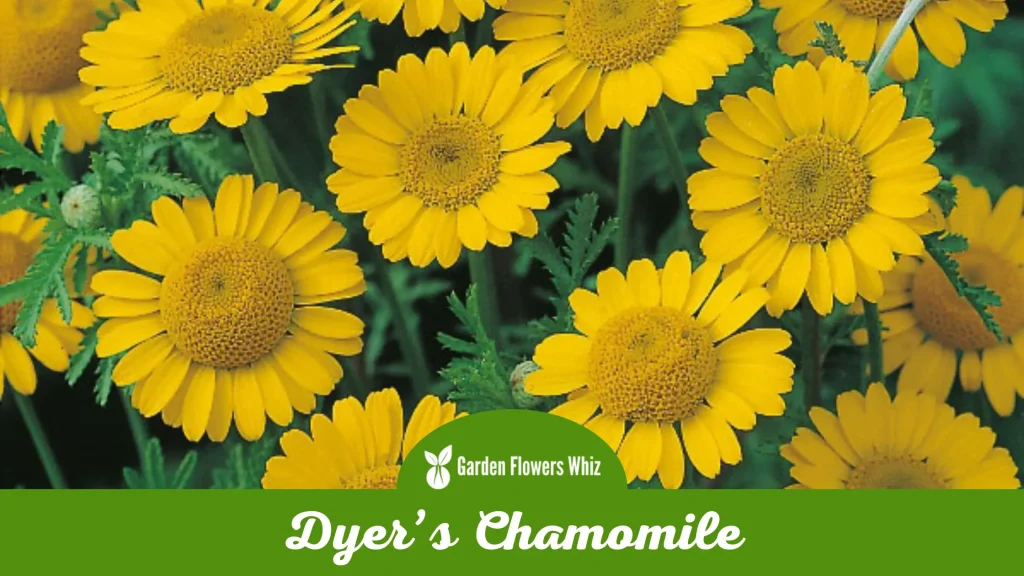
Originally from the Mediterranean region, Dyer’s chamomile, often known as yellow chamomile, is a hardy annual herb that is now widely grown all over the world.
Its bright yellow blossoms are used to make a natural dye that may yield hues ranging from lemon to golden yellow in the textile industry, earning the plant its name.
Dyer’s chamomile, with its cheery, daisy-like flowers and ferny foliage, is valued for its decorative qualities in addition to its useful uses.
The plant is ideal for garden beds, borders, and containers and normally grows to a height of 30 to 50 cm. It is a fantastic choice for novice gardeners or those with little time for maintenance because it is drought-tolerant and low-maintenance.
Dyer’s chamomile is a flexible and alluring choice to take into account whether you want to brighten up your garden, organically dye textiles, or learn more about the health advantages of herbal therapy.
2. Dwarf Crested Iris
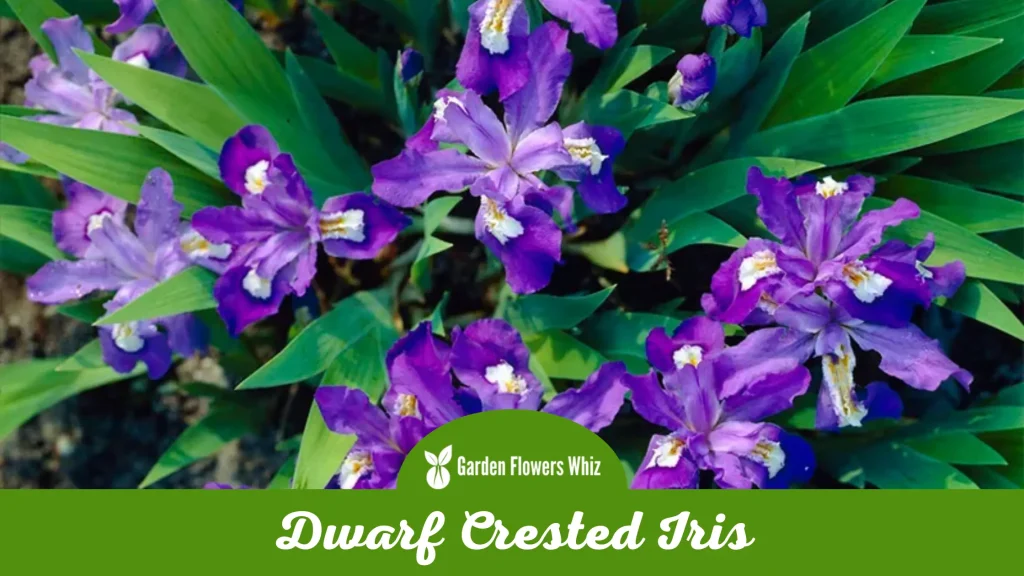
A tiny yet beautiful wildflower that is indigenous to the eastern United States is the dwarf crested iris. It usually reaches a height of 10 to 15 cm, and in the early spring, it produces small, pale blue to violet flowers with three different petals that each have a characteristic crest.
The dwarf crested iris fits perfectly in rock gardens, borders, and other small-scale planting schemes because, as its name implies, it is a compact plant.
It grows best in moist, well-draining soils in either partial shade or full sun, and once established, it is also drought-tolerant. The dwarf crested iris is a beautiful addition to any garden or natural setting, and it also serves as a significant food source for native bees and other pollinators.
Its leaf also serves as an attractive ground cover, reducing weed growth and preventing erosion. A dwarf crested iris is an excellent option if you’re seeking a low-maintenance but attractive wildflower that benefits your neighborhood ecosystems.
It adds a versatile and priceless element to any garden or landscape thanks to its endearing blossoms and ecological advantages.
3. Dutchman’s Breeches
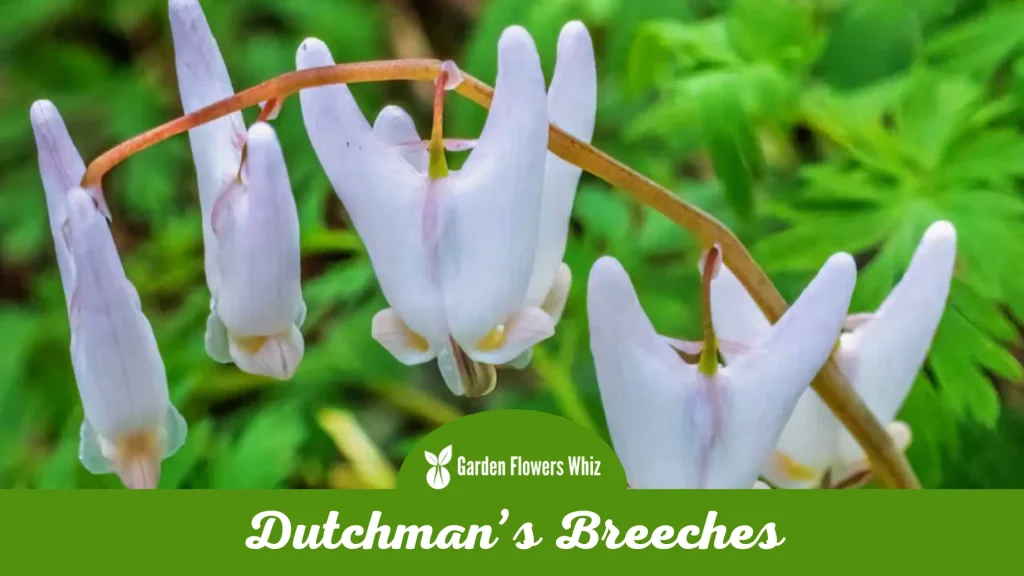
Native to North America, Dutchman’s Breeches is a spring-blooming wildflower. It gets its unusual name from the tiny, white-to-pink blossoms that resemble upside-down breeches or pantaloons.
The plant’s fern-like foliage is where the flowers, which are clustered in drooping clusters and up to 30 cm tall, emerge.
Hardy in nature, Dutchman’s Breeches grows in cool, wet, and shaded settings like woodlands or by streams.
Also, it works well in rock gardens where its diminutive stature and distinctive form can be highlighted. During the arduous winter, the plant’s early- to mid-spring blooms are a welcome sight.
Dutchman’s Breeches is a beautiful addition to any garden or natural area, and they are also a vital food source for native bees and other pollinators.
Dutchman’s Breeches is a special and rewarding option if you’re seeking for a distinctive and environmentally beneficial addition to your garden or natural area.
4. Dutchman’s Pipe Cactus
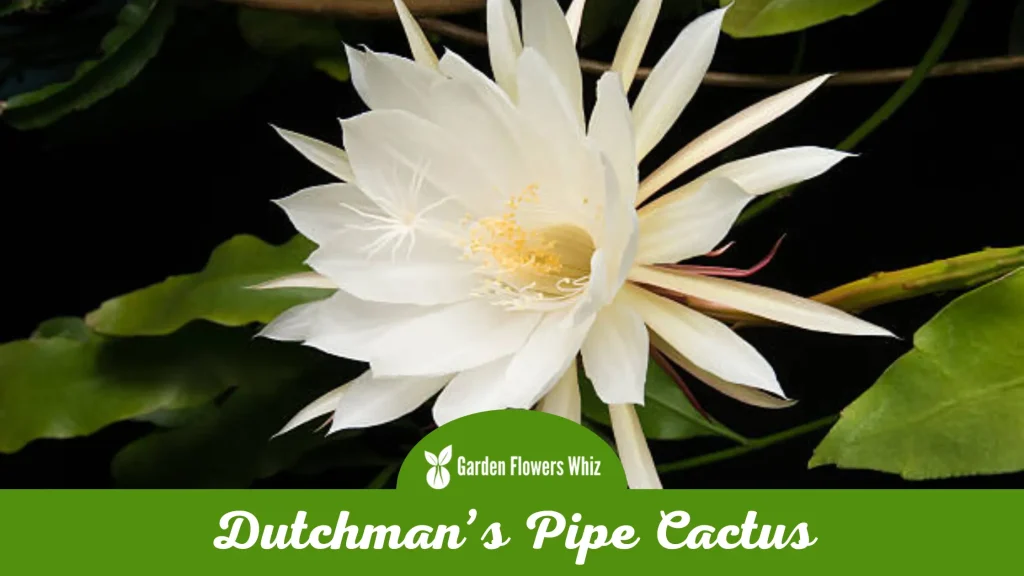
A spectacular succulent that is indigenous to the deserts of North and Central America is the Dutchman’s Pipe Cactus, commonly referred to as the queen of the night.
It is a slow-growing plant that normally grows between one and three meters tall, and the peculiar, wavy ridges on its branches give it the appearance of a pipe organ or a snake.
Beautiful, fragrant flowers of the Dutchman’s Pipe Cactus only bloom at night, luring moths and other nocturnal pollinators.
The flowers are white, tubular, and up to 30 cm long. They give off a fragrant aroma that permeates the area. The Dutchman’s Pipe Cactus is a somewhat uncommon and difficult-to-grow plant, although it may be cultivated in well-drained soils with little water and fertilizer.
It is frequently cultivated for its ornamental appeal, and any cactus or succulent garden would benefit from having its distinctive form and blossoms.
The Dutchman’s Pipe Cactus is a lovely and fascinating choice that is guaranteed to capture both you and your guests if you’re searching for a visually appealing and distinctive plant that adds interest to your landscape.
5. Dutch Iris
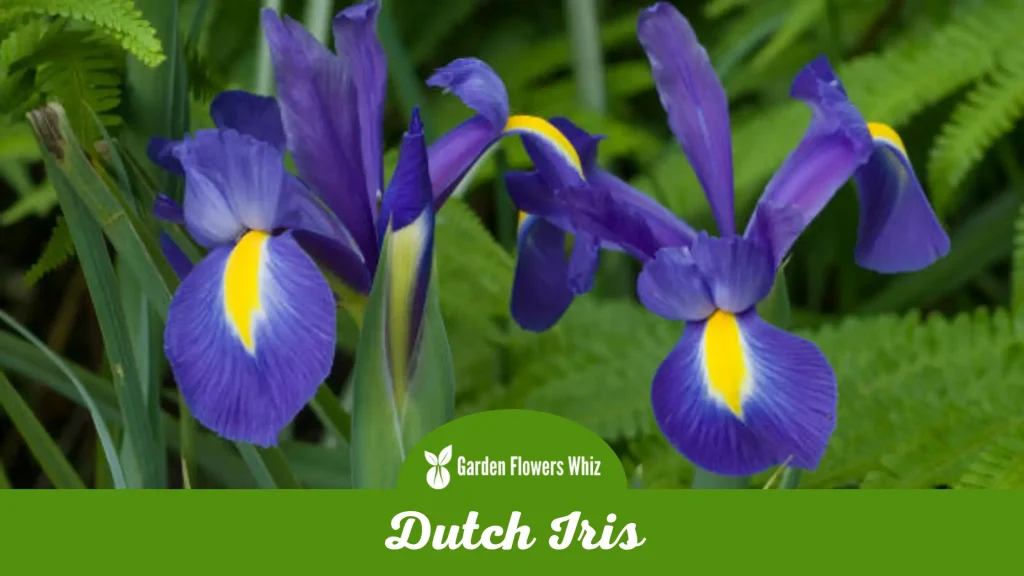
Iridaceae is a family of flowers that includes the lovely Dutch Iris. These plants are commonly cultivated for their colorful flowers and are indigenous to the eastern Mediterranean.
The Dutch Iris is a bulbous plant that may reach a height of 90 cm and has flowers that are often blue but can also be found in white, yellow, and purple hues.
The huge flowers have six finely placed petals that are organized in the shape of a fan. Because of their lengthy, straight stems and vivid hues, they are in bloom throughout the spring and are highly sought after as cut flowers.
Dutch iris bulbs are frequently accessible in garden centers and nurseries and are simple to grow. They can tolerate some shade but prefer well-drained soil and a sunny site.
These plants can be used in borders, rock gardens, or pots as single specimens or in groups. Dutch iris is a well-liked option for cut flowers and is frequently used in bouquets and floral arrangements.
The Dutch iris, in general, is a lovely and elegant flower that adds beauty and color to any garden or floral arrangement.
6. Dittany
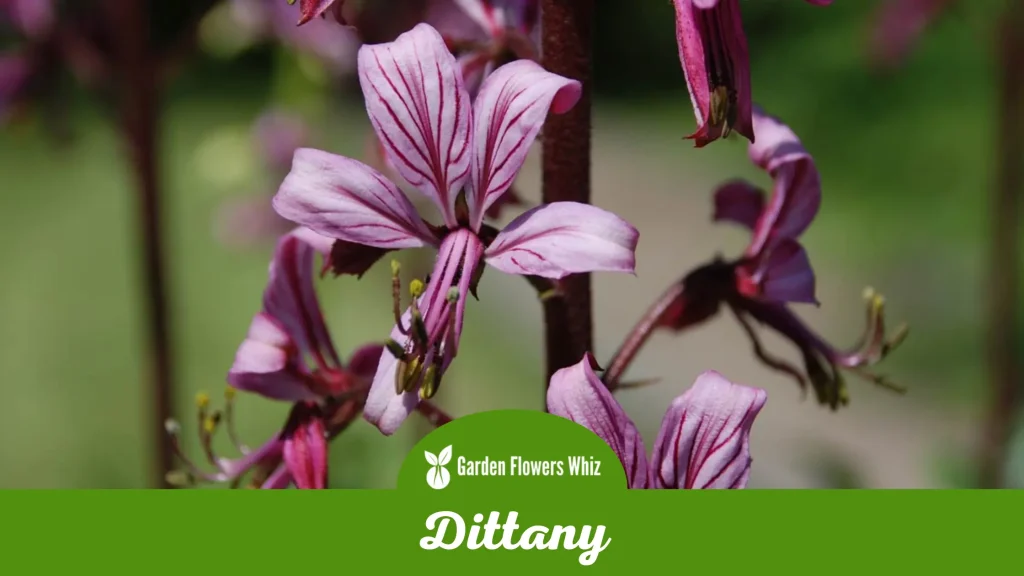
A lovely floral plant called dittany is indigenous to the Mediterranean area, particularly the island of Crete. It also goes by the scientific name Origanum dictamnus and is a member of the Lamiaceae family.
The plant is a small perennial shrub that can reach a height of 30 cm. It has dark green leaves and summer-blooming pink or white flowers.
While being tiny and delicate, the blossoms are a favorite for gardens and floral arrangements because of their distinctive and pleasing aroma.
Dittany is a plant that does well in sunny, arid environments and is quite simple to grow. Being drought-tolerant and preferring well-drained soil makes it a common selection for xeriscaping and water-conserving gardening.
7. Dietes
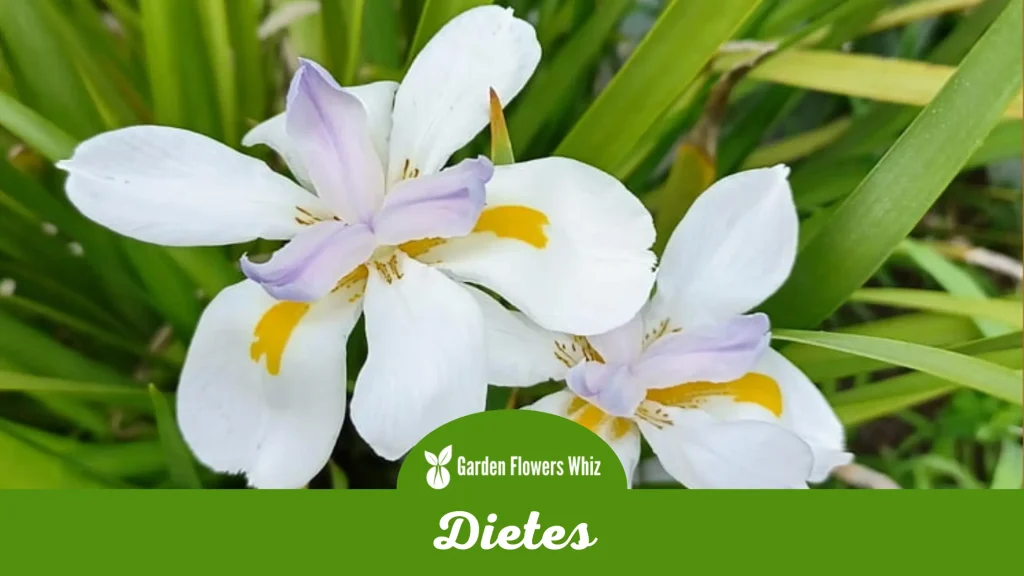
A genus of flowering plants in the Iridaceae family is called Dietes. The “Fortnight Lily” or “African Iris” is its popular name, and it is a native of southern and eastern Africa.
The plant produces clusters of small, white, or yellow flowers with lovely patterns and appealing sword-shaped leaves.
The common name “Fortnight Lily” comes from the fact that the flowers are produced in large quantities and frequently bloom in cycles of about two weeks.
Dietes is a resilient, low-maintenance plant that grows well in gardens and other outdoor spaces. It favors well-drained soil, a sunny or somewhat shaded site, and is drought-tolerant.
The plant can be cultivated in containers and is frequently used as a ground cover or border. It is a well-liked option for gardeners of all skill levels due to its resilience and simple maintenance requirements.
8. Dichondra
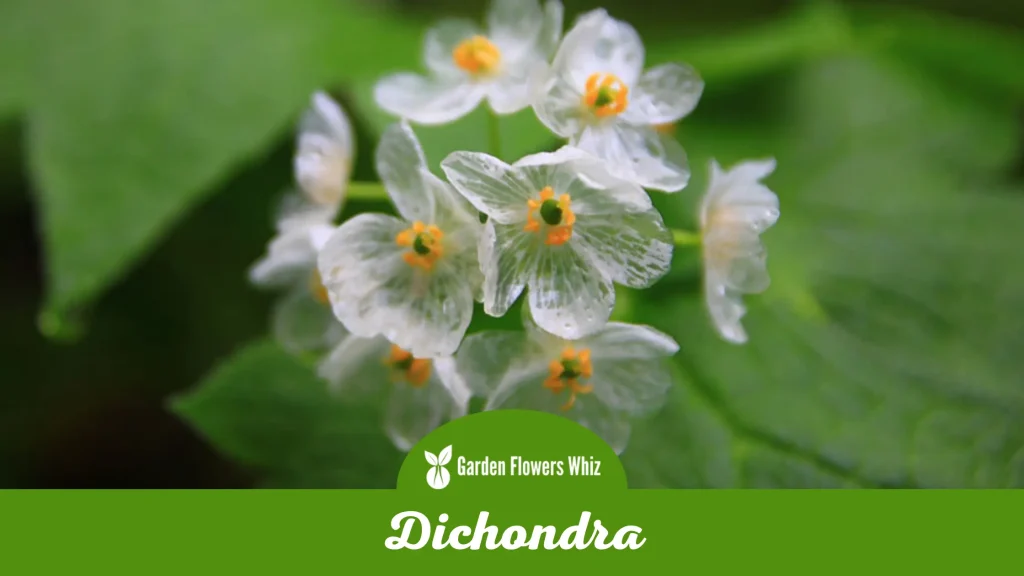
Dichondra is a genus of flowering plants in the Convolvulaceae family. It is a native of North America, and it inhabits a range of habitats, such as prairies, meadows, and open woodlands.
The plant has little, coin-shaped, round, bright green leaves, and it also makes tiny, insignificant flowers.
The leaves of dichondra, which have a soft and velvety feel, are what is planted for most purposes. Dichondra is a common ground cover that’s frequently utilized in lawns since it can grow dense, low-maintenance ground cover that can withstand foot traffic.
Because of its trailing habit, which makes it a great “spiller” plant, the plant is also a popular choice for hanging baskets and other containers.
Dichondra enjoys a position that is sunny or somewhat shaded, as well as well-drained soil. It’s a low-maintenance plant that doesn’t require much fertilizer or water.
Gardeners seeking to add texture and visual appeal to their landscapes frequently choose it because of its soft, velvety leaf and low-maintenance requirements.
9. Diascia
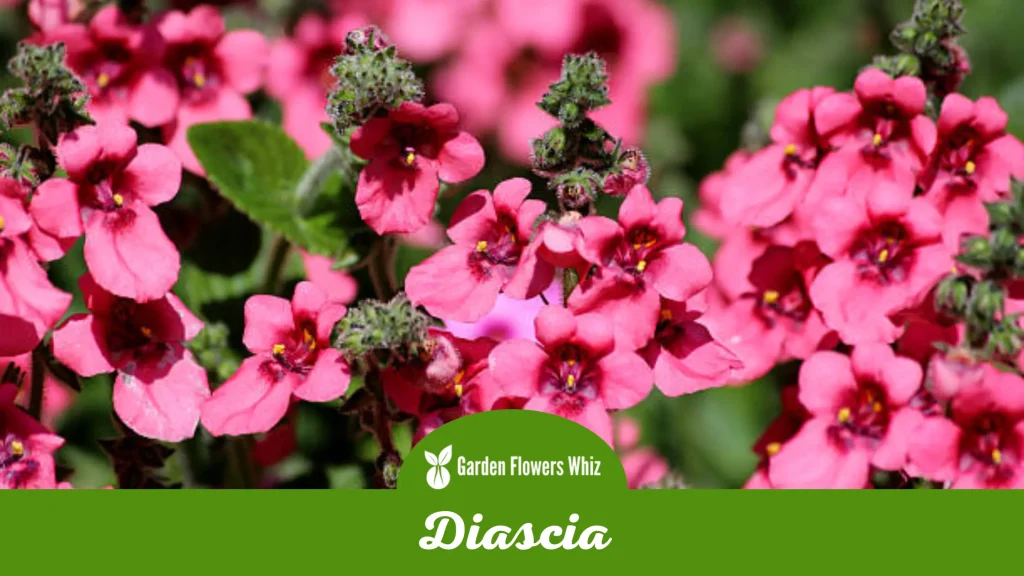
A genus of flowering plants in the Scrophulariaceae family is called Diascia. It is a native of southern Africa and is frequently called the “twinspur” because of the flowers it produces, which have two characteristic spurs.
The diascia plant grows a profusion of small, delicate tubular blooms in pink, red, and white hues on slender, trailing stems that can be up to 60 cm long.
Gardeners who want to add a flash of color to their borders and rock gardens frequently use diascia. To produce vibrant displays of color, the plant is frequently combined with other bedding plants like petunias and lobelias.
Also, because of its trailing nature, it is perfect for hanging baskets and window boxes in container gardening.
Generally speaking, diascia plants are simple to grow and need sunny conditions as well as well-drained soil. They require routine watering to sustain good development and generally minimal care.
It is a well-liked option for gardeners wishing to add color and texture to their landscapes because of its unusual blossoms and trailing habit.
10. Dianthus
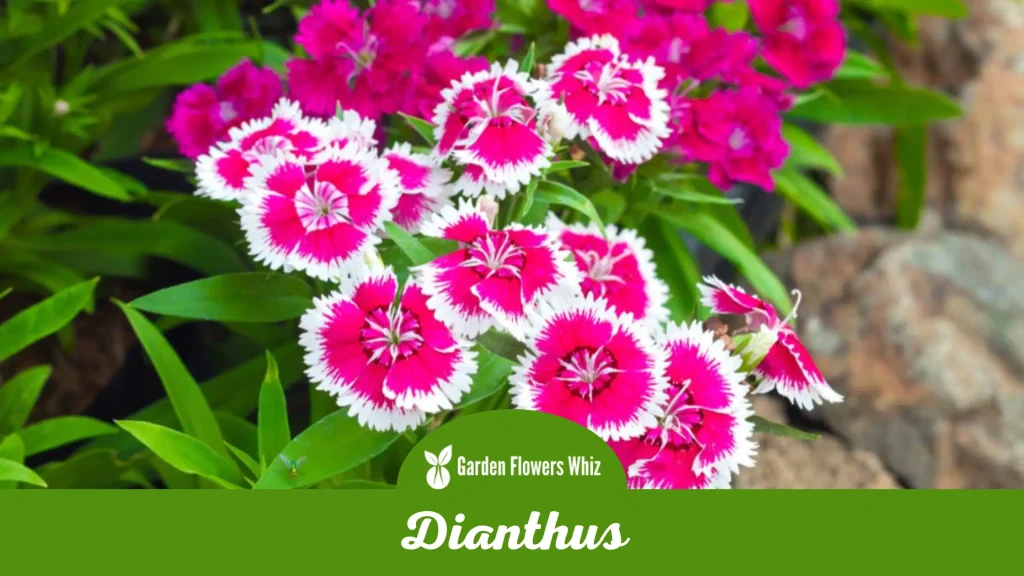
Dianthus also referred to as “pinks,” is a genus of flowering plants in the Caryophyllaceae family. Although the plants are native to Europe and Asia, they are now grown in gardens all over the world.
Dianthus is a perennial herbaceous plant that has an abundance of fragrant, spectacular blooms in pink, red, white, and purple hues.
On tall stems above the leaves, the flowers are formed in bunches and have fringed edges. Gardeners who want to enhance their gardens with color and aroma frequently use dianthus.
The plants require little maintenance and like sunny surroundings and well-drained soil. Its vibrant flowers and subtle scent offer a touch of elegance and charm to borders, rock gardens, and cottage gardens where they are frequently employed.
Dianthus is a popular choice for window boxes and hanging baskets and is particularly well-suited to container gardening.
It is a popular choice for gardeners who want to create stunning and enchanting garden displays because of its fragrant flowers and delicate, fringed petals.
11. Dianella
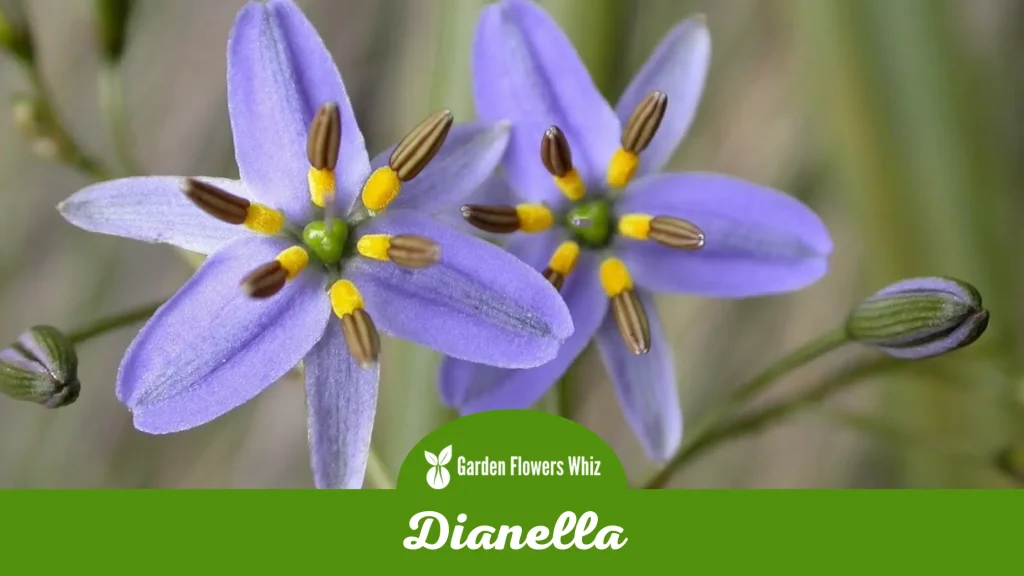
A genus of flowering plants called Dianella is a member of the Asphodelaceae family. Native to Australia, New Zealand, and the nearby Pacific islands, the plants are.
Dianella has clusters of small, delicate blooms in blue, purple, or white, which are followed by berries that are either bright blue or red.
The plants also feature long, strap-like leaves that can be green or blue-gray in color and are frequently variegated.
Gardeners who want to add a touch of refinement to their landscapes frequently choose Daniella. The plants are frequently utilized as ground cover, in borders, and in large plantings.
They are a fantastic option for gardens that receive little watering because they can withstand drought and require little upkeep. Dianella thrives in saltwater environments, making it a good choice for coastal gardens.
It is a well-liked option for incorporating texture and visual interest into garden displays because of its tiny flowers and long, strap-like leaves.
It is a popular choice for gardeners searching for a plant that is simple to maintain due to its hardiness and low maintenance requirements.
12. Deutzia

A genus of blooming plants in the Hydrangeaceae family is called Deutzia. Native to eastern and central Asia, the plants produce a profusion of colorful, fragrant flowers in colors of white, pink, or purple that are both beautiful and eye-catching.
Deutzia plants are deciduous shrubs that normally reach heights of 1 to 2 meters and have a dense, bushy form. Gardeners who want to enhance their landscapes with color and aroma frequently use deutzia.
The plants are frequently utilized as specimen shrubs, in mass plantings, and as borders. They prefer well-drained soil, a sunny or somewhat shady position, and require relatively little maintenance.
Deutzia is a well-liked option for patio plants and is especially well-suited to container gardening. It is a preferred option for gardeners wishing to create stunning and inviting garden displays due to its brilliant blossoms and gentle smell.
13. Desert Rose

Apocynaceae is a family of succulent plants that includes Desert Rose, also known as Adenium. It is a well-liked decorative plant in tropical and subtropical areas and is native to Africa and Arabia.
The plant is distinguished by its spectacular, trumpet-shaped flowers in hues of pink, red, and white, as well as its thick, inflated stem. For gardeners seeking an exotic and distinctive plant that can survive in hot and arid circumstances, the desert rose is a well-liked option.
The soil needs to drain well, and the plant enjoys a sunny site. In rock gardens or desert landscapes, it is frequently planted in containers or as a specimen plant.
The desert rose is a low-maintenance plant for gardeners since it needs little attention and is largely pest-resistant. The plant is renowned for its brilliant flowers and intriguing stem structure, in addition to its distinctive appearance.
The flowers give a vibrant splash of color to any landscape and normally bloom in the spring and summer.
14. Delphinium

The Ranunculaceae family of flowering plants includes the genus Delphinium. The Northern Hemisphere native plants grow tall spikes of colorful, single, or double flowers in hues of blue, pink, purple, white, and red.
The herbaceous perennial delphinium has an upright, bushy form and normally reaches heights of 1 to 2 meters.
For gardeners wishing to add vertical interest and color to their landscapes, a delphinium is a popular option. The plants are frequently used as specimen plants, in bulk plantings, and as borders.
They favor sunny areas with well-drained soil. Furthermore, suitable for cut flower gardens, delphinium is a preferred option for floral arrangements.
15. Delosperma
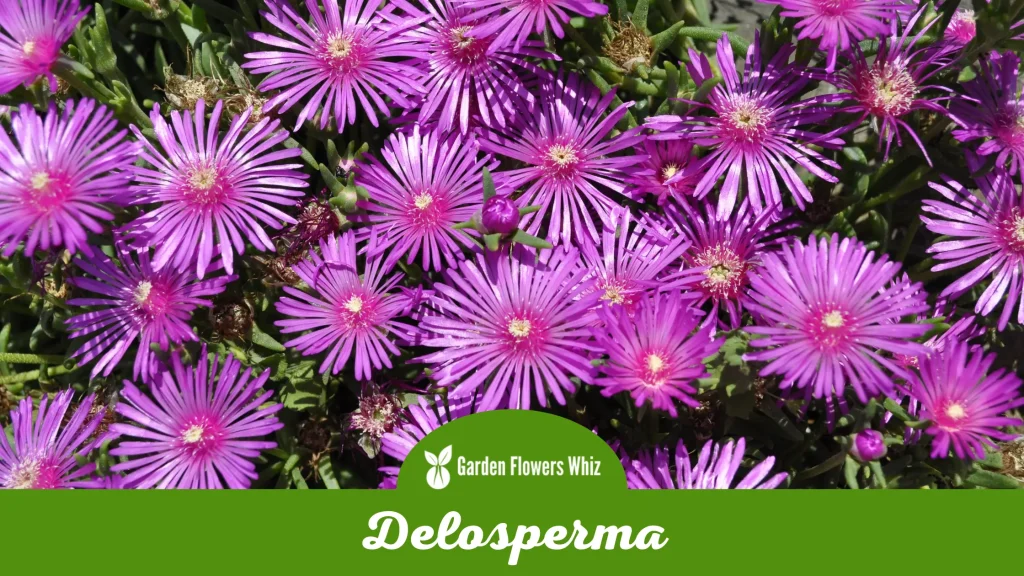
Delosperma is a genus of flowering plants in the Aizoaceae family. Due to their succulent leaves that give them a frosty appearance, the plants, which are native to southern Africa, are known as ice plants.
Delosperma blooms profusely with stunning, daisy-like flowers in pink, yellow, purple, and white hues. Gardeners frequently choose Delosperma when looking for a low-maintenance, drought-tolerant plant that can survive in hot, arid climates.
The soil should drain well, and the plants like it sunny. In rock gardens, container plants, and as a ground cover, delosperma is frequently employed.
16. Day Lilly
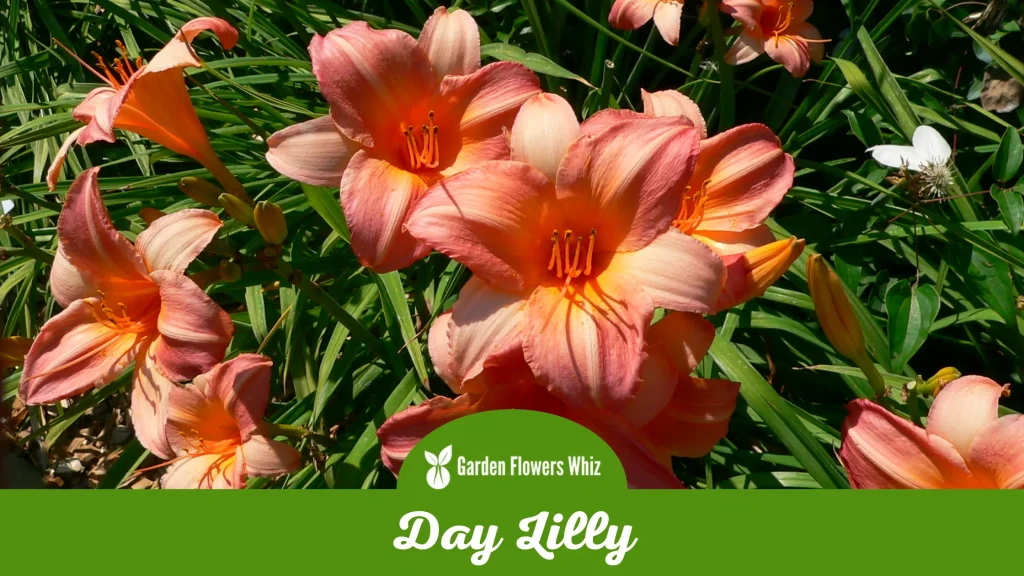
The Asphodelaceae genus of herbaceous flowering plants includes the daylily. The flowers, which are magnificent trumpet-shaped blooms in hues of orange, yellow, red, and pink, are what have caused the plants, which are native to Asia, to become widely cultivated around the world.
The term “daylily” comes from the fact that the flowers often only endure one day. Gardeners love daylilies for how simple they are to care for and how many different colors and sizes they come in.
They are frequently used as specimen plants, in bulk plantings, and in borders. Daylilies need well-draining soil, a sunny or somewhat shaded site, and require little maintenance.
They are the perfect plant for gardeners who desire a beautiful garden with little work because they are also pest- and drought-resistant.
They are a fantastic option for gardeners who want to build a distinctive and eye-catching display due to their huge variety of colors and sizes.
17. Daphne
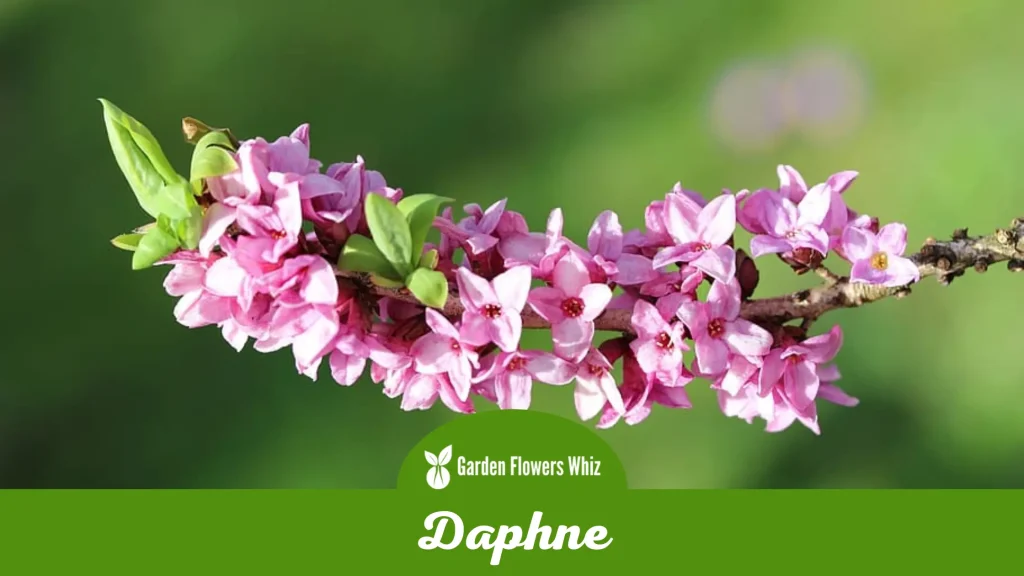
A genus of evergreen and deciduous plants in the Thymelaeaceae family is called Daphne. The plants, which are native to North Africa, Asia, and Europe, are highly prized for their aromatic flowers and foliage.
Daphne produces a profusion of fragrant blooms in pink, white, or occasionally yellow clusters. Gardeners who want to give their landscapes scent and winter appeal frequently use daphne.
The plants prefer a sunny or somewhat shady setting, as well as well-drained soil. Daphne may be grown in containers and is frequently used as a specimen plant or in mixed borders.
But, it’s crucial to remember that Daphne can be poisonous if consumed, and its sap can irritate the skin. As a result, it’s crucial to handle the plant carefully and keep kids and pets away from it.
All things considered, daphne is a lovely and incredibly aromatic plant that is perfect for gardeners trying to make a lovely and fragrant garden.
It is a popular choice for gardeners wishing to add winter interest to their landscapes due to its fragrant blossoms and evergreen foliage.
18. Daisy
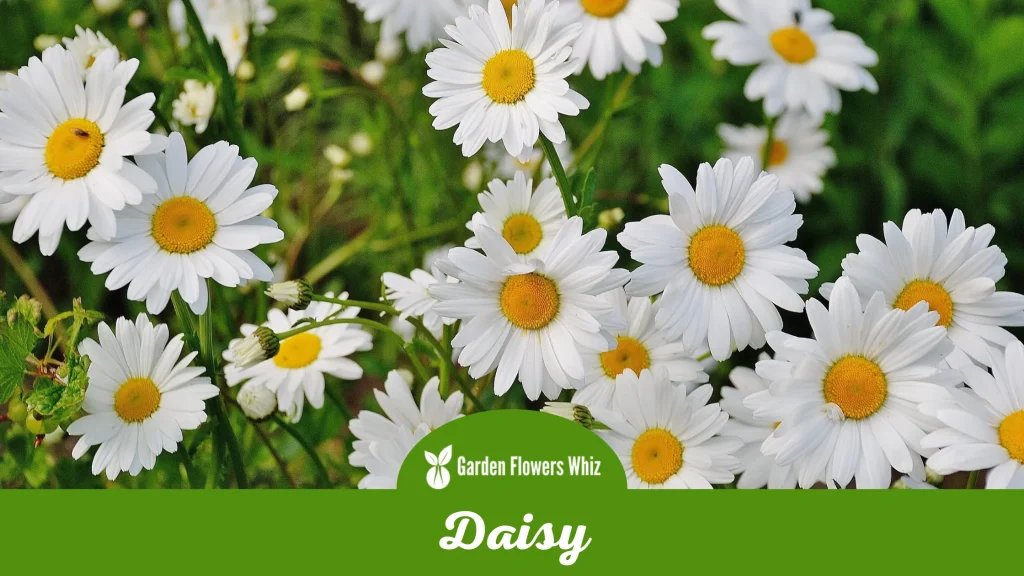
The bright and well-known daisy is renowned for its understated beauty and symbolism. This perennial plant is indigenous to areas of Asia, North Africa, and Europe and is a member of the Asteraceae family.
The “disc floret,” often known as the daisy, is a flower with white or yellow petals and a bright yellow center. Because of its resilience and simplicity of maintenance, this flower, which blooms from late spring to early October, is a favorite of gardeners.
Daisies are a common flower choice for weddings, baby showers, and other events since they are frequently connected to innocence, purity, and fresh beginnings.
Daisy plants are a great option for ground cover, rock gardens, and borders in gardening. In order for a garden to be pollinator-friendly, it must be a favorite of pollinators like bees and butterflies.
Daisy blossoms continue to be a favorite flower in gardens and floral arrangements all over the world because of their ageless beauty and meaning.
19. Dahlia
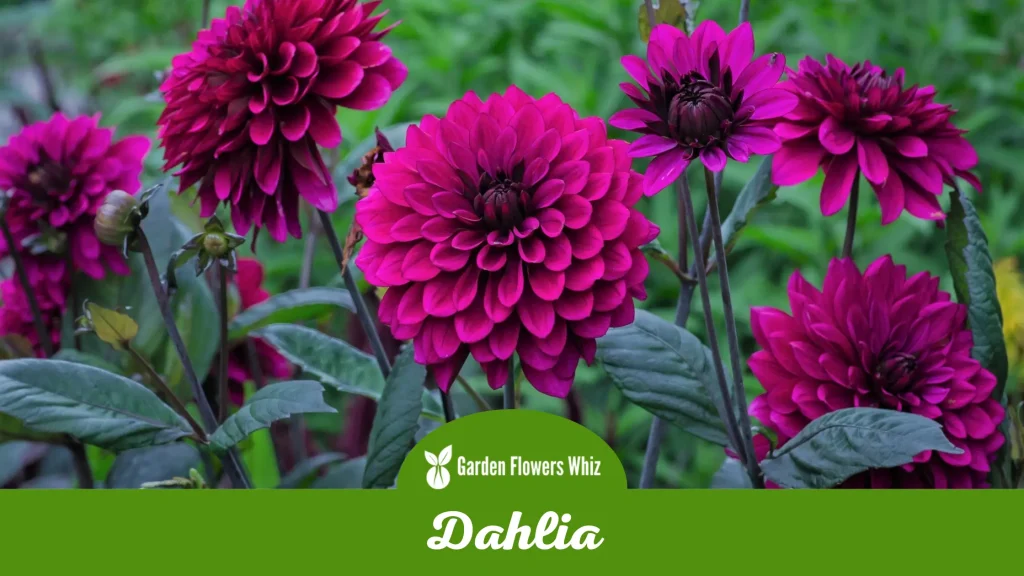
Asteraceae is the name of the genus of herbaceous flowering plants that includes dahlias. Originally from Mexico, the plants are now widely cultivated throughout the world for their colorful and beautiful flowers.
Large, vividly colored flowers in a variety of sizes and shapes, including small, single flowers and enormous, double blossoms in hues of white, pink, orange, red, and purple, are produced by dahlias.
Gardeners love dahlias for their adaptability, showiness, and ease of maintenance. They are frequently used as cut flowers, in borders, and in large plantings.
Dahlias need frequent watering during the growing season and enjoy sunny conditions and well-draining soil. They require protection during the winter in cooler climates because they are also frost-sensitive.
They are a popular choice for gardeners who wish to create a vibrant and eye-catching garden display due to their magnificent blossoms and ease of care.
20. Daffodil
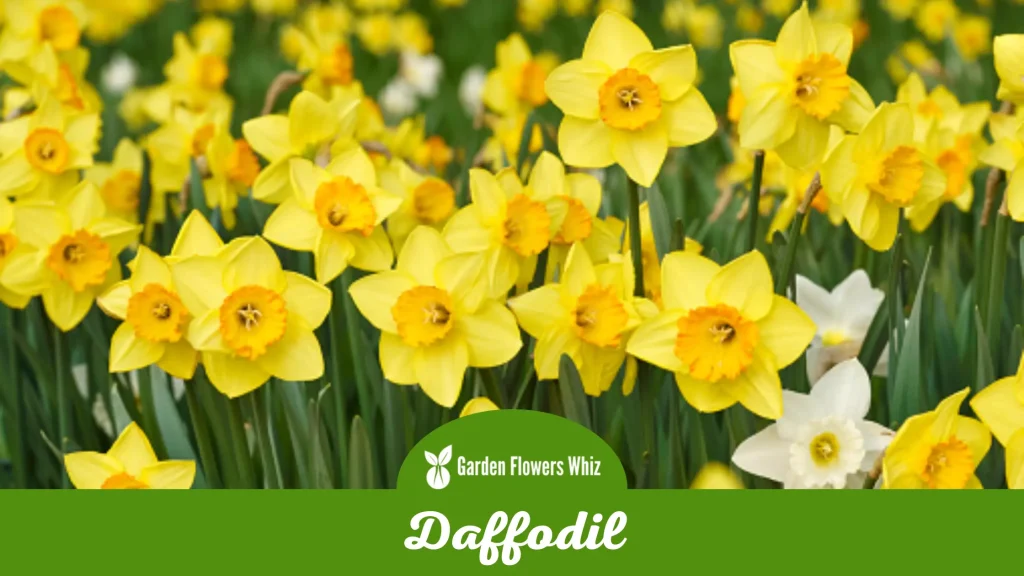
Daffodils are a genus of perennial bulbous plants of the Amaryllidaceae family. Their vivid yellow, trumpet-shaped flowers have led to their widespread cultivation around the world. They are native to Europe, North Africa, and western Asia.
The flowers of daffodils often develop in March or April, making them one of the springtime’s first flowering plants. Gardeners who want to spruce up their landscapes with color and intrigue frequently opt for daffodils.
They are also produced for cut flowers and are frequently utilized in borders, rock gardens, and naturalized settings. Daffodils are quite simple to care for and appreciate well-draining soil in a sunny or partially shaded environment.
In order to help the bulbs conserve energy for the following year’s growth, the leaves, after blooming, should be allowed to fall off naturally.
Daffodils are a bright, happy plant that is ideal for gardeners wishing to design a stunning, low-maintenance garden show.
After a long winter, their early spring blossoms are a wonderful sight, and any garden will benefit from their sunny yellow color.
21. Dalmation Bellflower

The charming and resilient perennial plant known as the Dalmatian Bellflower, or Campanula portenschlagiana, is indigenous to Croatia’s Dalmatian Mountains.
Because of its attractive look and adaptability, gardeners frequently choose this flower from the Campanula family.
The Dalmatian Bellflower is a little, low-growing shrub that has a profusion of tidy clusters of tiny, violet-blue, bell-shaped flowers.
These flowers are a great addition to any pollinator-friendly landscape because they bloom from late spring to early October and draw bees and butterflies.
This flower spreads quickly, creating a dense mat of lovely green leaves that is excellent for filling gaps in garden beds or cascading over walls and edges, making it a favorite for ground cover as well.
The Dalmatian Bellflower is a low-maintenance plant that grows well in full sun to moderate shade and necessitates routine watering, especially during dry seasons.
For gardeners of all skill levels searching for a low-maintenance ground cover or a lovely, eye-catching border plant, this plant is a fantastic option.
In Summary
As we near the conclusion of our investigation of flowers whose names begin with D, it becomes abundantly evident that this ostensibly restricted region of the floral kingdom is home to a wide variety of exquisite blooms.
Each flower, from the delicate daffodil to the colorful dahlia, has its own distinctive qualities and cultural importance. These flowers also serve as a reminder of the value of diversity in our world and in nature, in addition to their aesthetic beauty and symbolic meaning.

Stacey Hernandez is a seasoned botanist with over 16 years of experience in the field. Her passion for plants and their intricate workings began at a young age, and she has since devoted her life to studying and understanding them.
Stacey’s expertise extends to a wide range of plant species, from delicate flowers to towering trees. As the founder of Garden Flowers Whiz, Stacey has created a platform for plant enthusiasts to seek guidance and advice.
Her website is a go-to resource for those seeking answers to their gardening dilemmas, whether it’s how to care for a particular plant or which species to choose for a specific climate.
